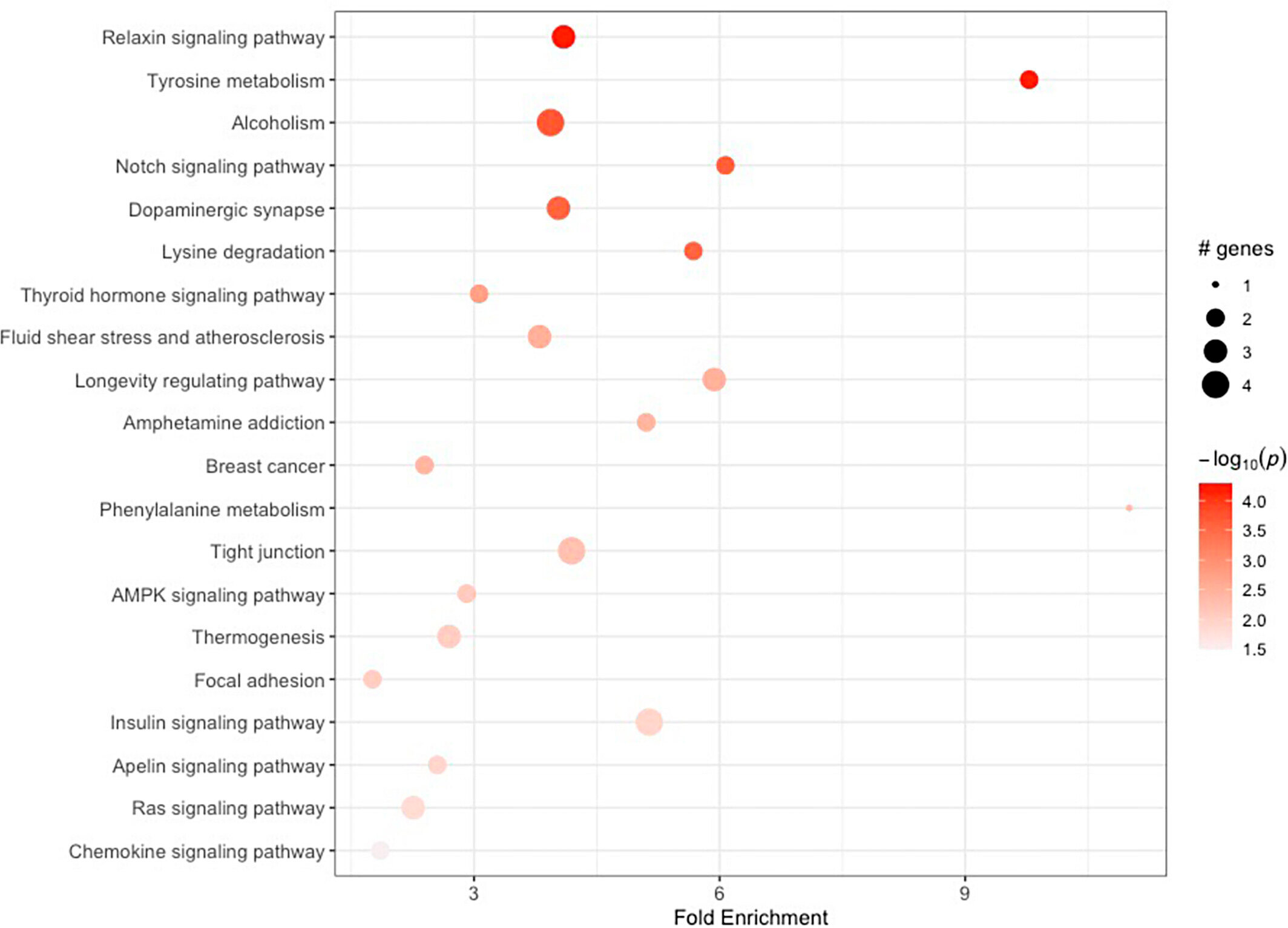
根据发表在《神经病学年鉴》杂志上的研究结果,西北医学院的一组研究人员在帕金森病患者的血液中发现了新的 DNA 甲基化模式。
这项研究由肯和露丝戴维神经病学系运动障碍科助理教授、医学博士、理学硕士 Paulina Gonzalez-Latapi 领导,证明了使用 DNA 甲基化作为生物标志物和诊断工具来识别患者疾病风险的潜力。
帕金森病是指大脑某些区域失去产生多巴胺并最终调节运动的能力。根据迈克尔·J·福克斯帕金森病研究基金会的数据,这种疾病影响着全球超过600万人。
除了已知的帕金森病遗传因素外,最近的研究还表明,环境因素也可能增加罹患该病的风险。然而,我们对环境因素和基因突变对帕金森病患病风险的影响仍知之甚少。
在当前的研究中,研究人员检查了参与帕金森病进展标志物倡议 (PPMI) 研究的 196 名帕金森病患者和 86 名健康参与者的血液样本中的 DNA 甲基化谱。
冈萨雷斯-拉塔皮说:“从某种意义上说,DNA甲基化是对先前环境暴露的记忆,最终会改变我们细胞和身体中的甲基化特征。”
研究人员首先分析了全基因组甲基化数据,以确定参与者在三年研究期间的全血样本(由红细胞、白细胞和血小板组成)中的甲基化变化。然后,他们将这些数据与通过RNA测序获得的基因表达数据整合在一起。通过多种方法,研究团队发现帕金森病患者与健康对照组相比,存在75个具有不同甲基化模式的差异表达基因。

基线差异甲基化区域 (DMR) 的通路富集情况。圆圈大小表示属于每条通路的基因数量(圆圈越大,基因数量越多)。来源:《神经病学年鉴》(2024)。DOI:10.1002/ana.26923
具体而言,从基线到整个三年的研究期间,CYP2E1 基因的 DNA 甲基化都存在持续的差异。据 Gonzalez-Latapy 称,CYP2E1 蛋白已知能够代谢包括杀虫剂在内的底物,而接触杀虫剂此前已被证明与帕金森病的发生有关。
冈萨雷斯-拉塔皮说:“这是朝着揭示帕金森病中发生的复杂相互作用迈出的重要一步,并可能为识别早期诊断和进展的潜在生物标志物铺平道路。”
“描述血液中的 DNA 甲基化和基因表达模式有可能帮助我们了解帕金森病发展过程中环境和遗传因素之间的复杂相互作用,”该研究的资深作者、亚伦蒙哥马利沃德教授兼神经病学系肯和露丝戴维主席、医学博士、哲学博士 Dimitri Crane 说。
“从更广泛的角度来看,这种基于患者的研究将有助于通过生物学视角对帕金森病患者进行分类,最终将有助于为不同亚型患者开发更精准的治疗方法。”
冈萨雷斯-拉塔皮表示,她的团队计划未来研究帕金森病前驱期患者的DNA甲基化数据,这些患者有患病风险,但尚未出现症状。她补充说,他们还希望研究环境暴露(例如农药暴露)如何影响患者体内甲基化的变化。

